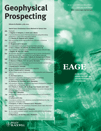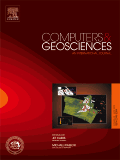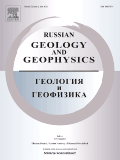
Geophysics and Geophysical Exploration
Scope & Guideline
Unlocking Earth's Secrets with Cutting-Edge Exploration Techniques
Introduction
Aims and Scopes
- Geophysical Survey Techniques:
The journal emphasizes the development and application of various geophysical survey techniques, including seismic, electromagnetic, and gravity methods, to investigate subsurface features and dynamics. - Machine Learning and Data Analysis:
A significant focus is placed on the integration of machine learning and advanced data analysis techniques to enhance the interpretation of geophysical data, improve inversion algorithms, and facilitate real-time data processing. - Environmental and Resource Management:
Research addressing the exploration and management of natural resources, including carbon capture and storage (CCS) and the detection of subsurface contaminants, is a core area of interest. - Theoretical and Computational Geophysics:
The journal publishes studies that develop theoretical frameworks and computational models for geophysical phenomena, contributing to the foundational understanding of geophysical processes. - Interdisciplinary Approaches:
There is a strong emphasis on interdisciplinary research that connects geophysics with other fields such as geology, environmental science, and engineering, aiming for comprehensive solutions to complex geophysical challenges.
Trending and Emerging
- Deep Learning Applications:
There is a notable increase in research utilizing deep learning techniques for seismic data interpretation, noise suppression, and inversion processes, showcasing the potential of artificial intelligence in enhancing geophysical methodologies. - Environmental Monitoring and Sustainability:
Emerging themes related to environmental monitoring, particularly in the context of carbon capture and storage, reflect a heightened awareness of sustainability challenges and the role of geophysics in addressing them. - Integration of Sensor Technologies:
The introduction of novel sensor technologies, such as cableless seismic data acquisition and unmanned aircraft systems for electromagnetic surveys, indicates a trend towards innovative data collection methods that enhance geophysical exploration. - Physics-informed Machine Learning:
Research focusing on integrating physics-based models with machine learning approaches for geophysical data analysis is gaining traction, suggesting a convergence of traditional geophysical principles with modern computational techniques.
Declining or Waning
- Traditional Induced Polarization Techniques:
Research on conventional methods of induced polarization, including the time-domain approaches, appears to be declining as newer techniques and computational methods gain prominence. - Basic Gravity and Magnetic Studies:
The frequency of publications focused solely on basic gravity and magnetic studies has decreased, suggesting a shift toward more complex and integrated geophysical analysis. - Non-advanced Geophysical Equipment:
There seems to be a waning interest in studies that involve traditional geophysical equipment without advanced technological integration, as the field moves towards more innovative and efficient tools.
Similar Journals

GEOPHYSICAL PROSPECTING
Pioneering Insights into Earth's Structure and ProcessesGEOPHYSICAL PROSPECTING is a premier journal published by Wiley, dedicated to the fields of geophysics and geochemistry. With an impressive impact factor, it holds a notable place in academic circles, boasting a ranking of Q1 in Geophysics and Q2 in Geochemistry and Petrology for 2023. The journal, ISSN 0016-8025 and E-ISSN 1365-2478, features cutting-edge research addressing key challenges in understanding the Earth's structure and processes. It has been an influential platform since its inception in 1953 and continues to converge towards its goal of disseminating integral geophysical advancements through 2024. Although not open access, researchers can benefit from its wealth of high-quality articles, substantiated by commendable rankings of 41st in Geophysics and 53rd in Geochemistry and Petrology. From its headquarters in the United Kingdom, GEOPHYSICAL PROSPECTING not only contributes to the theoretical advancement of these fields but also aids practical applications in environmental exploration and resource management, making it an essential resource for researchers, students, and professionals alike.

COMPUTERS & GEOSCIENCES
Advancing the Frontier of Computational GeosciencesCOMPUTERS & GEOSCIENCES, published by PERGAMON-ELSEVIER SCIENCE LTD, is a prestigious academic journal that delivers cutting-edge research at the intersection of computational techniques and geosciences. With an ISSN of 0098-3004 and an E-ISSN of 1873-7803, this journal has been contributing significantly to the field since its inception in 1975 and continues to attract noteworthy articles through 2024. Recognized as a Q1 journal in both the categories of Computers in Earth Sciences and Information Systems, it ranks within the top 12% and 17% of its respective fields according to Scopus. The journal emphasizes innovative applications of computer science in geoscience, providing a platform for researchers to share their findings, methodologies, and advancements. Researchers, professionals, and students dedicated to exploring the computational facets of environmental studies will find this journal to be an invaluable resource.

MARINE GEOPHYSICAL RESEARCH
Navigating the complexities of the ocean floor.MARINE GEOPHYSICAL RESEARCH is a prominent journal published by Springer, dedicated to advancing the field of marine geophysics, with significant contributions to geochemistry, petrology, and oceanography. Established in 1970 and currently running its volumes until 2024, this journal operates as a key resource for researchers and professionals focused on understanding the complexities of marine environments and geological processes. With a strong foothold in academic rankings—positioned in Q2 for both Geophysics and Oceanography, and Q3 for Geochemistry and Petrology in the 2023 category quartiles—MARINE GEOPHYSICAL RESEARCH provides a rigorous platform for high-quality research dissemination. Although not an open-access journal, it offers invaluable insights into marine geophysical phenomena, thus appealing to a diverse audience of scholars and practitioners. The journal’s relevance and impact are further underscored by its Scopus ranks, situating it competitively within the Earth and Planetary Sciences domain. Researchers and students seeking to stay abreast of cutting-edge developments and methodologies in marine geophysics will find it an essential addition to their academic resources.

Geofisica Internacional
Pioneering Insights in Geophysics and Energy StudiesGeofisica Internacional, an esteemed academic journal published by the Instituto de Geofísica at UNAM, Mexico's prestigious National Autonomous University, has been a pivotal platform for advancing the field of geophysics and energy studies since its inception in 1975. This Open Access journal aims to disseminate high-quality research findings, making significant contributions to our understanding of Earth's processes and energy resources. With a current impact factor that situates it in the Q3 category for both Energy (miscellaneous) and Geophysics, it provides a continuous dialogue for researchers, professionals, and students interested in the intersection of these critical areas. Based in Mexico City and publishing articles that span various geophysical disciplines, Geofisica Internacional is indispensable for anyone seeking to stay at the forefront of environmental and energy research.

Exploration Geophysics
Connecting Disciplines to Illuminate Earth's ProcessesExploration Geophysics is a prestigious journal published by Taylor & Francis Ltd., prominently focusing on the interdisciplinary fields of geology and geophysics. Established in 1970 and continuing its legacy to 2024, this journal serves as a vital platform for researchers, professionals, and students alike, disseminating cutting-edge research and innovative methodologies in earth sciences. With a robust impact factor that highlights its academic influence, and classified in the Q3 category for both geology and geophysics, it ranks among the notable publications in the field, placing it in the 51st and 50th percentiles of its respective categories. Although available through standard subscription access, the journal encourages engagement from a diverse readership aimed at exploring the intricacies of earth processes, resource exploration, and environmental evaluations. By contributing valuable insights and fostering collaborations, Exploration Geophysics continues to play a crucial role in advancing the understanding of our planet's subsurface dynamics.

Geofizicheskiy Zhurnal-Geophysical Journal
Exploring the Depths of Earth Science InnovationGeofizicheskiy Zhurnal-Geophysical Journal, published by the esteemed S I Subbotin Institute of Geophysics, National Academy of Sciences of Ukraine, stands as a vital resource for professionals and researchers in the field of geophysics. With an ISSN of 0203-3100 and an E-ISSN of 2524-1052, this journal is recognized for its rigorous peer-reviewed articles that delve into various aspects of geophysical research, including seismic studies, geodynamics, and Earth surface processes. Although currently not under an open access model, the journal maintains a commitment to disseminating high-quality research, thereby enriching the global geophysical community. The publication aims to foster collaboration and knowledge transfer among scientists and engineers while addressing complex geophysical challenges in a rapidly evolving landscape. By engaging with cutting-edge research, readers can expect to uncover insights that advance both theoretical understanding and practical applications in geophysical science.

Acta Geodynamica et Geomaterialia
Pioneering Research in Geological and Material BehaviorActa Geodynamica et Geomaterialia is a well-regarded journal published by the Academy of Sciences of the Czech Republic, Institute of Rock Structure and Mechanics. Since its inception in 2004, this journal has established itself as a vital resource within the realms of Geology, Geophysics, and Geotechnical Engineering, categorized in the Q3 quartile across these fields as of 2023. With a focus on innovative research that addresses complex Earth dynamics and material behavior, it provides a platform for scholars and professionals to disseminate their findings and foster academic discourse. The journal holds an important position in the academic landscape, particularly for those engaged in interdisciplinary studies bridging geology and engineering. Although it is not an open access publication, its content remains pivotal for advancing knowledge and practices within these areas, making it an essential read for researchers and students alike. The journal's operational address is located in the vibrant city of Prague, Czech Republic, further enriching its academic character.

CHINESE JOURNAL OF GEOPHYSICS-CHINESE EDITION
Exploring the Depths of Earth Science InnovationCHINESE JOURNAL OF GEOPHYSICS-CHINESE EDITION, published by SCIENCE PRESS, stands as a prominent platform for the dissemination of cutting-edge research in the fields of Geophysics and Geochemistry. Since its inception in 1979, this esteemed journal has successfully converged a wealth of knowledge, boasting a substantial impact factor and a recognized standing within the academic community, evidenced by its Q2 categorization in both Geochemistry and Petrology and Geophysics as of 2023. Researchers, professionals, and students looking to stay abreast of the latest advancements in solid-earth sciences will find the journal's comprehensive articles and studies invaluable. Based in Beijing, China, the journal emphasizes a broad scope, encompassing various aspects of geophysical research and methodologies. Although it does not currently offer open access options, its commitment to quality research makes it a crucial resource for the scientific community.

IEEE Geoscience and Remote Sensing Letters
Advancing Knowledge in Earth Sciences and TechnologyIEEE Geoscience and Remote Sensing Letters is a distinguished journal published by the IEEE-INST ELECTRICAL ELECTRONICS ENGINEERS INC, focusing on the cutting-edge realms of geoscience and remote sensing. Since its inception in 2004, the journal has maintained a significant role within its field, achieving a robust impact factor that places it in the Q1 category for both Electrical and Electronic Engineering and Geotechnical Engineering and Engineering Geology, reflecting its high-quality research output and influence. The journal is highly ranked in Scopus, securing the 35th position in Earth and Planetary Sciences and the 154th position in Engineering, showcasing its broad academic reach and engagement with current advancements in technology and earth sciences. Although the journal is not open access, it remains accessible to a wide readership, fostering an environment for innovation and knowledge sharing among researchers, professionals, and students interested in remote sensing technologies and geosciences. With its objective to publish concise articles that present significant results and advancements, IEEE Geoscience and Remote Sensing Letters continues to be a vital resource for anyone engaged in these dynamic fields.

Russian Geology and Geophysics
Exploring the Depths of Geology and GeophysicsRussian Geology and Geophysics is a seminal journal published by GEOSCIENCEWORLD that plays a pivotal role in the dissemination of vital research within the realms of Earth-Surface Processes, Geology, and Geophysics. With an ISSN of 1068-7971 and an E-ISSN of 1878-030X, this journal has witnessed a continuous evolution since its convergence in 2007 and is poised to thrive through 2024. While it is not an Open Access journal, it is recognized for its significant contributions to the academic community, holding a respectable Q2 ranking in Earth-Surface Processes and Q3 rankings in both Geology and Geophysics as of 2023. The journal’s impact factors align it within competitive quartiles, marking it as an essential resource for researchers and professionals seeking to stay at the forefront of geological and geophysical sciences. By publishing high-quality peer-reviewed articles, the journal fosters an environment of knowledge sharing and innovation, making it indispensable for students, practitioners, and scholars alike who are dedicated to advancing our understanding of Earth's complex systems.